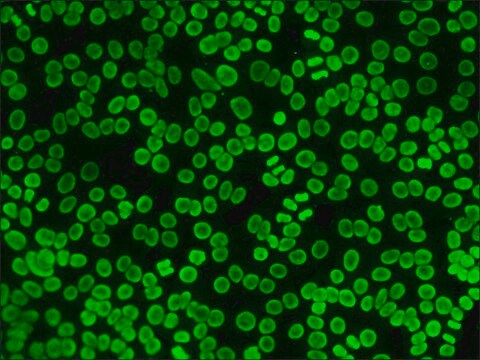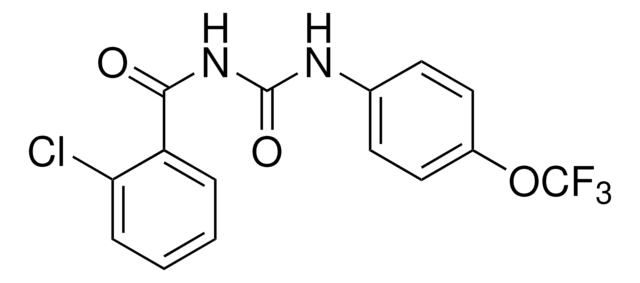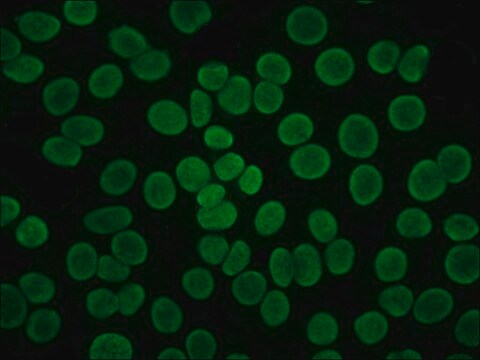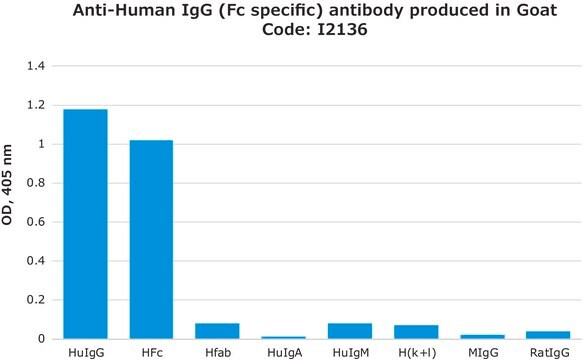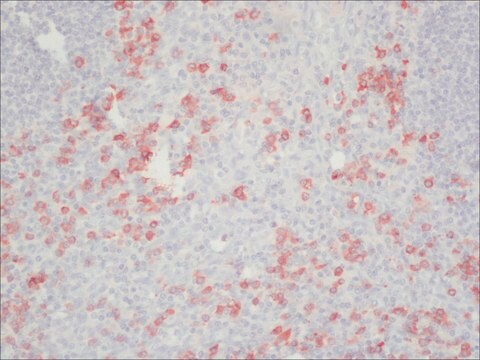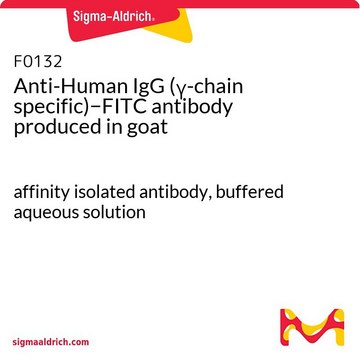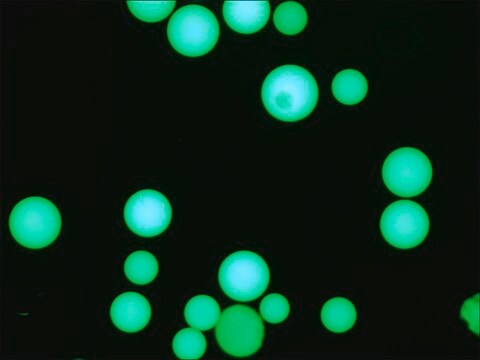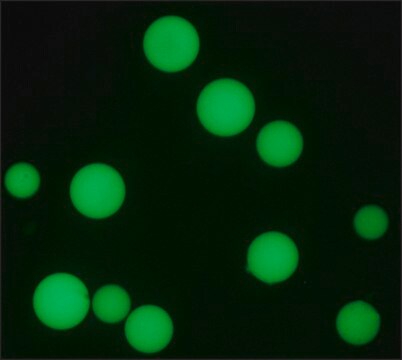F3512
Anti-Human IgG (whole molecule)−FITC antibody produced in goat
IgG fraction of antiserum, buffered aqueous solution
Synonym(s):
Goat Anti-Human IgG (whole molecule)−Fluorescein isothiocyanate
Sign Into View Organizational & Contract Pricing
All Photos(1)
About This Item
Recommended Products
biological source
goat
conjugate
FITC conjugate
antibody form
IgG fraction of antiserum
antibody product type
secondary antibodies
clone
polyclonal
form
buffered aqueous solution
storage condition
protect from light
technique(s)
immunofluorescence: 1:32-1:64 using Hep2 cells
storage temp.
−20°C
target post-translational modification
unmodified
Related Categories
General description
Human IgGs are glycoprotein antibodies that contain two equivalent light chains and a pair of identical heavy chains. IgGs have four distinct isoforms, ranging from IgG1 to IgG4. These antibodies regulate immunological responses to allergy and pathogenic infections. IgGs have also been implicated in complement fixation and autoimmune disorders . Specificity of anti-human IgG (whole molecule)-FITC antibody for human IgG is determined by immunoelectrophoresis against purified human IgA, IgG, IgM, and Bence Jones κ and λ myeloma proteins.
Immunoglobulin G (IgG) belongs to the immunoglobulin family and is a widely expressed serum antibody. The two heavy chains and two light chains of IgG are connected by a disulfide bond. It is a glycoprotein and mainly helps in immune defense. IgG is usually found as a monomer. IgG antibody subtype is the most abundant of serum immunoglobulins of the immune system. It is secreted by B cells and is found in blood and extracellular fluids. About 70 percent of the total immunoglobulin consists of IgG. Immunoglobulin G (IgG) participates in hypersensitivity type II and type III.
Immunogen
Pooled normal human serum
Application
Anti-Human IgG (whole molecule)-FITC antibody has been used:
- in nucleolar staining
- in single color fluorescent labeling for the detection of lytically induced cells
- to detect the model antigen
- in immunohistochemistry
- in immunofluorescence
Anti-Human IgG (whole molecule)-FITC antibody may be used for anti-nuclear antibody (ANA) assays. The antibody may also be used in FACS-based assays.
Physical form
Solution in 0.01 M phosphate buffered saline, pH 7.4, containing 15 mM sodium azide.
Disclaimer
Unless otherwise stated in our catalog or other company documentation accompanying the product(s), our products are intended for research use only and are not to be used for any other purpose, which includes but is not limited to, unauthorized commercial uses, in vitro diagnostic uses, ex vivo or in vivo therapeutic uses or any type of consumption or application to humans or animals.
Not finding the right product?
Try our Product Selector Tool.
Storage Class Code
10 - Combustible liquids
WGK
nwg
Flash Point(F)
Not applicable
Flash Point(C)
Not applicable
Personal Protective Equipment
dust mask type N95 (US), Eyeshields, Gloves
Choose from one of the most recent versions:
Already Own This Product?
Find documentation for the products that you have recently purchased in the Document Library.
Customers Also Viewed
Ontogeny and distribution of Fc gamma receptors in the human placenta. Transport or immune surveillance?
Bright N A, et al.
Journal of Anatomy, 184(Pt 2), 297-297 (1994)
F. Calabi and M.S. Neuberger
Molecular Genetics of Immunoglobulin (1987)
A model system for concurrent detection of antigen and antibody based on immunological fluorescent method
Cao Y C
Journal of Spectroscopy (New York, NY, United States), 2015 (2015)
Jill Countryman et al.
Journal of virology, 83(20), 10694-10709 (2009-08-07)
Epstein-Barr virus (EBV) can be reactivated from latency into the lytic cycle by many stimuli believed to operate by different mechanisms. Cell lines containing EBV differ in their responses to inducing stimuli, yet all stimuli require de novo protein synthesis
J Cheng et al.
Molecular and cellular biology, 21(18), 6198-6209 (2001-08-18)
Sphingolipids are major components of the plasma membrane of eukaryotic cells and were once thought of merely as structural components of the membrane. We have investigated effects of inhibiting sphingolipid biosynthesis, both in germinating spores and growing hyphae of Aspergillus
Our team of scientists has experience in all areas of research including Life Science, Material Science, Chemical Synthesis, Chromatography, Analytical and many others.
Contact Technical Service
